How to Make Easy to Make Paper Airplanes
There are many skills fathers should pass on to their children: how to ride a bike, how to skip a stone, and of course, how to make a paper airplane. When it's time to show your kids how to fold a humble piece of paper into a soaring jet, don't stumble around and hastily construct one from the poor memory of your youth — one that takes a disappointing nosedive as soon as it leaves your fingertips. Instead, teach them the art of making a plane that can truly go the distance.
The three designs below are tried and true (you wouldn't believe some of the science behind paper airplanes) and are perfect beginner, moderate, and expert level models to play with. They go in order from easiest to hardest, so there's something for every age level — including adult; don't act like you're not going to try these out in the break room.
Beginner Level: The Bulldog Dart
This paper airplane is a warm-up of sorts. It's simple, requires few folds, and flies well. It's just not going to win you any contests or style points. If it's your kid's first time making a real paper airplane, this is a good place to start.
1. First you fold the paper in half lengthwise, and then unfold. This initial crease is simply a guideline for the next folds.
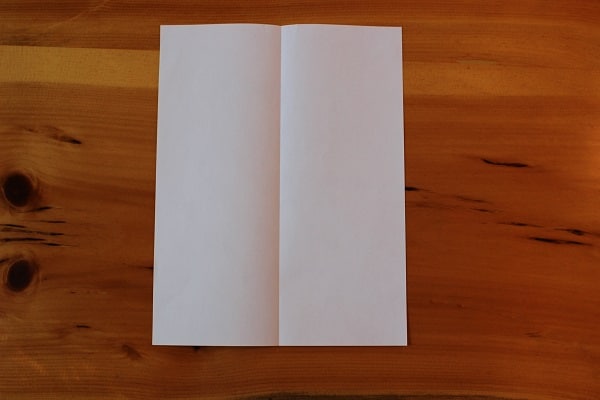
2. Fold the top two corners down so they meet the center crease. This is the classic way to start a paper airplane, and probably what you first learned as a kid.

3. Flip the plane over, and fold the corners in again to the center crease. You want the diagonal line coming off the top of the plane (on the left side) to be lined up with the middle (like on the right side).


After both folds are completed.
4. Fold the top point down so that the tip meets the bottom of where the previous folds come together.

5. Fold the entire plane in half, in on itself. This creates the snub nose, which gives the Bulldog Dart its name.

6. Fold the wings down so that you're making a straight line across from the top of the snub nose. Repeat on the other side.

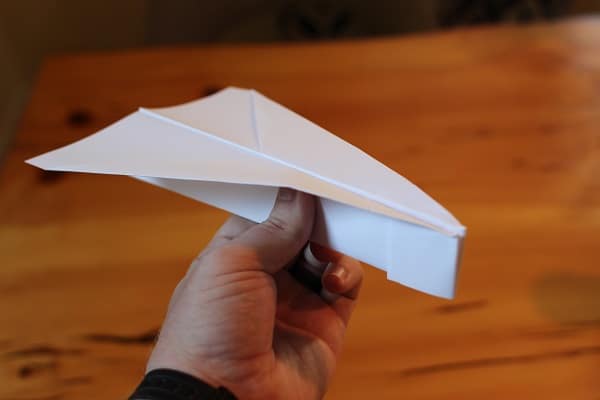
The finished Bulldog Dart. This flies better when thrown at lower speeds. Your tendency is to launch it, but the heavy nose will just fly it into the ground. Give it a softer throw and you'll have better luck.
Intermediate Level: The Harrier
This is a slightly more advanced paper airplane. There are a few more folds, and it flies a bit better than the above Bulldog Dart. This is the perfect middle ground between simple and complex recreational paper aircraft.
1. Fold in half lengthwise and then unfold. As with the Bulldog above, this center crease is just a guide for future folds.

2. Fold the top corners in so they meet at the center crease.

3. Fold the entire top down so that it resembles an envelope. Make sure you leave a half inch or so at the bottom — you don't want the top point to evenly meet the bottom edge.
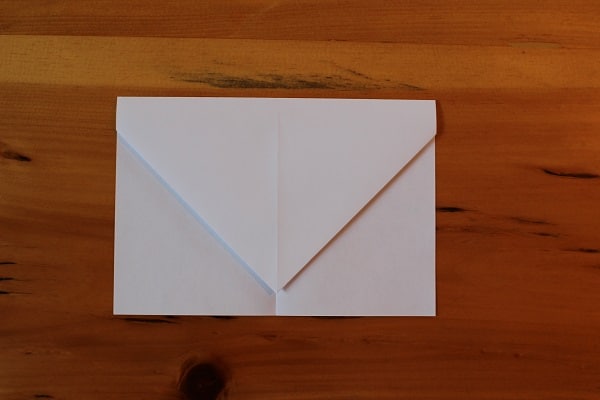
4. Fold the top corners in so they meet at the middle. There should be a small triangle tail hanging out beneath these folds.

5. Fold that small triangle up to hold those previous folds in place.

6. Fold in half, but make you sure you fold it outwards on itself, not inwards. You want the previous triangular fold to be visible on the bottom edge.
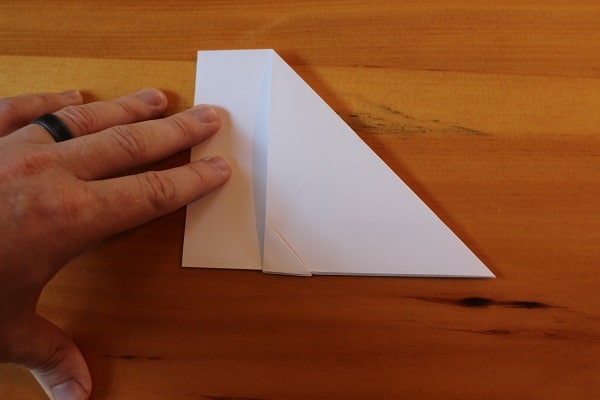
7. Fold the wing down so its edge meets the bottom edge of the airplane. Repeat on the other side.

The finished Harrier shown below. It has cool pointed wings and has great stability because of the triangle on the bottom.

Expert Level: The Hammer
While there are far more advanced paper airplanes, this one, in my opinion, is the perfect balance of complexity and accessibility for the Average Paper Airplane Joe. It has far more folds than the previous two models, and also flies the best and farthest. Pay attention with this one, folks, and the payoff is well worth it.
1. First, fold the top left corner all the way down so it meets the right edge of the paper. You'll then unfold, as this will be a guiding crease.
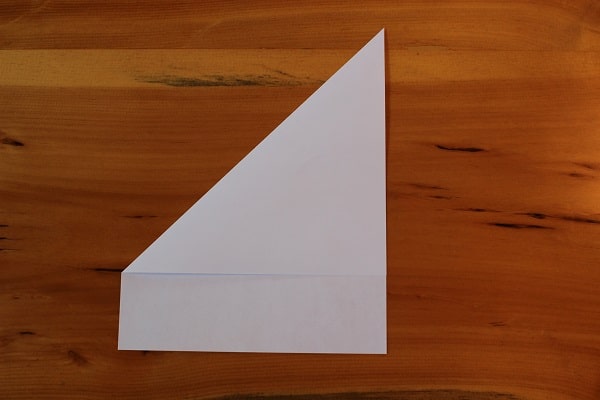
2. Repeat the same thing with the top right corner and unfold.


You should end up with an unfolded sheet of paper with two creases forming an X.
3. Fold the top right corner down so that its edge meets the crease that goes from top left to bottom right.

4. Do the same with the left corner. The top left point should exactly meet the diagonal right edge of the airplane.

5. Fold the plane in half in on itself, then unfold. You'll use that middle crease as a guide.

6. After you've unfolded the previous step, fold the top down so that its edge meets the bottom edge.

7. Fold the top corners down so that their points meet at the middle crease.
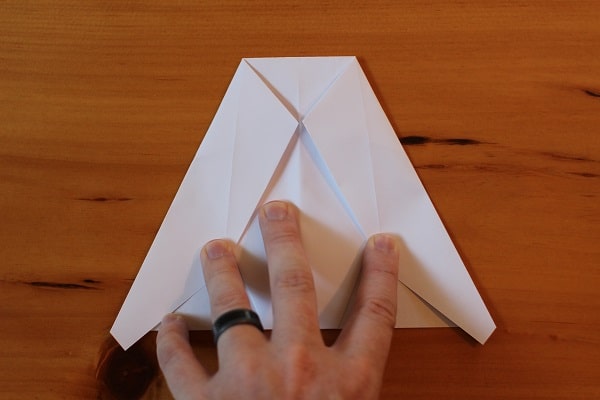
8. Unfold — as with many steps in making this airplane, these creases are a guide.

9. Now take what was the top edge that you previously folded down (Step 6) and fold it back up at the point where its edge meets the creases from the previous step.

10. Fold the corners in yet again so that their edge meets both the edge of the top flap and the crease from Step 7.


Both corners folded in, meeting both the top flap and the previously-made creases. These are ultimately the wings.
11. Fold the wings in once more, this time simply folding along the crease that you already made. After this step your plane should have straight lines down from the top to the bottom.


Both wings folded in again; straight edges from top to bottom.
12. Fold the top down from where it meets the top of the wing flaps you created in the previous step.

13. Fold the whole thing in half outward. You want all the paper flaps on the outside of the craft. At this point, folding can become a little tricky because of the thickness of the paper, so take extra care in making good, clean folds.
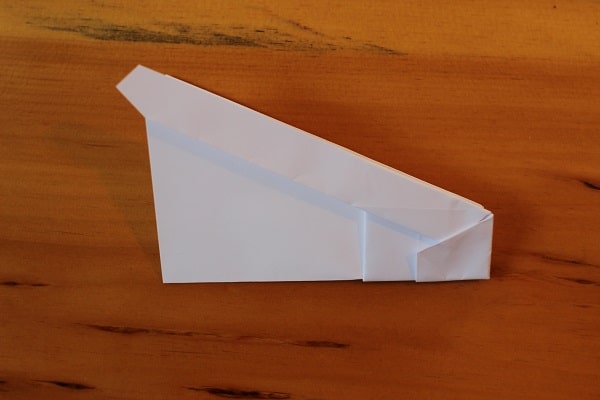
14. Fold the wings down so that their edge meets the bottom edge of the plane. This creates a small snub nose. Again, this can be a tough fold, so be precise and take your time if you have to.


The finished Hammer. This bad boy flies like a dream.
Other DIY kids projects we've featured include:
- How to Make a Wooden Sword
- Easy, No-Sew Tepee
- Rubber Band Gun
- Battery Made From Quarters
- Pencil Catapult
While you're making these paper airplanes with your kiddos, tell them some great riddles for kids. Great way to pass the time.
Want to learn more about rediscovering the joys of play? Listen to our podcast interview with Charlie Hoehn, author of Play It Away: A Workaholic's Cure For Anxiety.
Previous Next
halesbourponshave.blogspot.com
Source: https://www.artofmanliness.com/skills/how-to/how-to-make-the-worlds-best-paper-airplanes/

0 Response to "How to Make Easy to Make Paper Airplanes"
Post a Comment